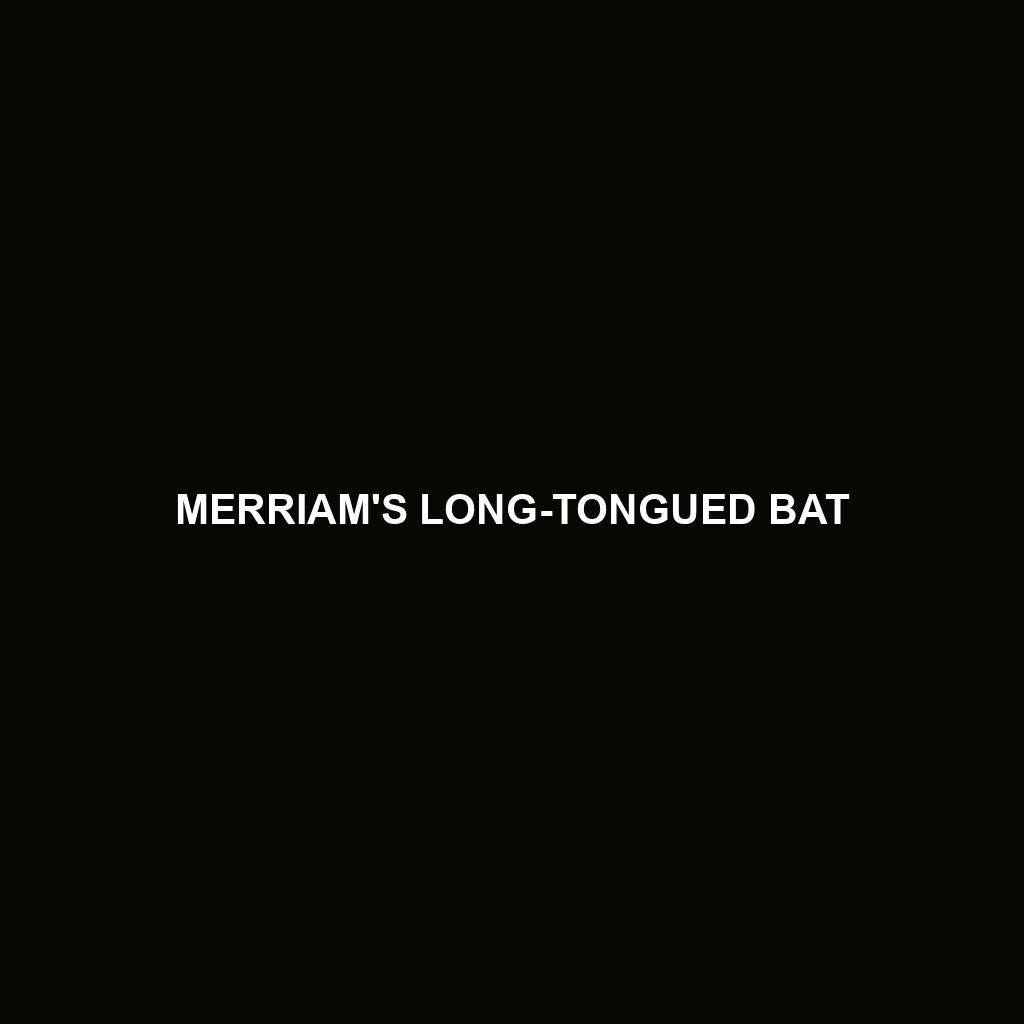Merriam’s Long-tongued Bat
Common Name: Merriam’s Long-tongued Bat
Scientific Name: Choeronycteris mexicana
Habitat: Merriam’s Long-tongued Bat primarily inhabits arid and semi-arid regions across southwestern United States and parts of Mexico. This species is often found in desert scrub, open woodlands, and areas with abundant flowering plants, which provide essential foraging grounds. Their presence is most notable in states such as Arizona and New Mexico, where they roost in caves, abandoned buildings, and crevices during the daytime, ensuring protection from predators.
Physical Characteristics: The Merriam’s Long-tongued Bat is a medium-sized bat, measuring approximately 9 to 11 cm in body length with a wingspan of about 25 to 30 cm. Characterized by a long, elongate tongue that aids in nectar feeding, this bat has a mix of brown and gray fur that helps it blend into its natural environment. Notable features include its pronounced snout and large ears, which are adaptations for their foraging behavior, allowing them to locate food sources effectively.
Behavior: This species exhibits unique foraging behaviors, often flying during dusk and dawn to avoid competition with other nectar-feeding animals. Merriam’s Long-tongued Bat is known for its remarkable ability to hover in front of flowers, using its long tongue to extract nectar. They are also social animals, roosting in small to medium-sized colonies, which provides benefits such as warmth and protection from predators.
Diet: Merriam’s Long-tongued Bat primarily feeds on nectar from various flowering plants, making them crucial pollinators in their habitats. They have been observed feeding on the nectar of plants such as agave and yucca, along with some fruits and insects, particularly during the breeding season when energy demands increase. Their specialized feeding habits contribute to the health of the ecosystem they inhabit, fostering plant reproduction through pollination.
Reproduction: The breeding season for Merriam’s Long-tongued Bat typically occurs in the late spring, with females giving birth to one or two pups after a gestation period of about 2 months. The young are born relatively underdeveloped and depend on their mothers for nourishment and protection. Pups begin to forage independently after several weeks but continue to rely on maternal care for safety and guidance until they are fully grown.
Conservation Status: The conservation status of Merriam’s Long-tongued Bat is currently classified as vulnerable due to habitat loss, pesticide usage, and climate change impacting their food sources. Continued efforts in habitat preservation and monitoring populations are essential to ensure their survival in the wild, as their declining numbers signal broader environmental changes.
Interesting Facts: One fascinating aspect of the Merriam’s Long-tongued Bat is its unique pollination role, similar to that of hummingbirds. This bat species is also capable of flying long distances in search of flowers, which makes them important for cross-pollination between widely spaced plants. Their remarkable tongues can extend beyond their body length, showcasing their adaptation to their diet.
Role in Ecosystem: Merriam’s Long-tongued Bat plays a vital role in its ecosystem as both a pollinator and prey species. By facilitating the pollination of various desert plants, they contribute to the health and diversity of their habitat. As prey for various predators, including birds of prey, they are integral to the food web, underscoring their importance in maintaining ecological balance.
